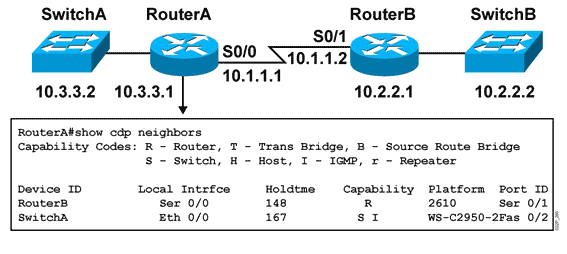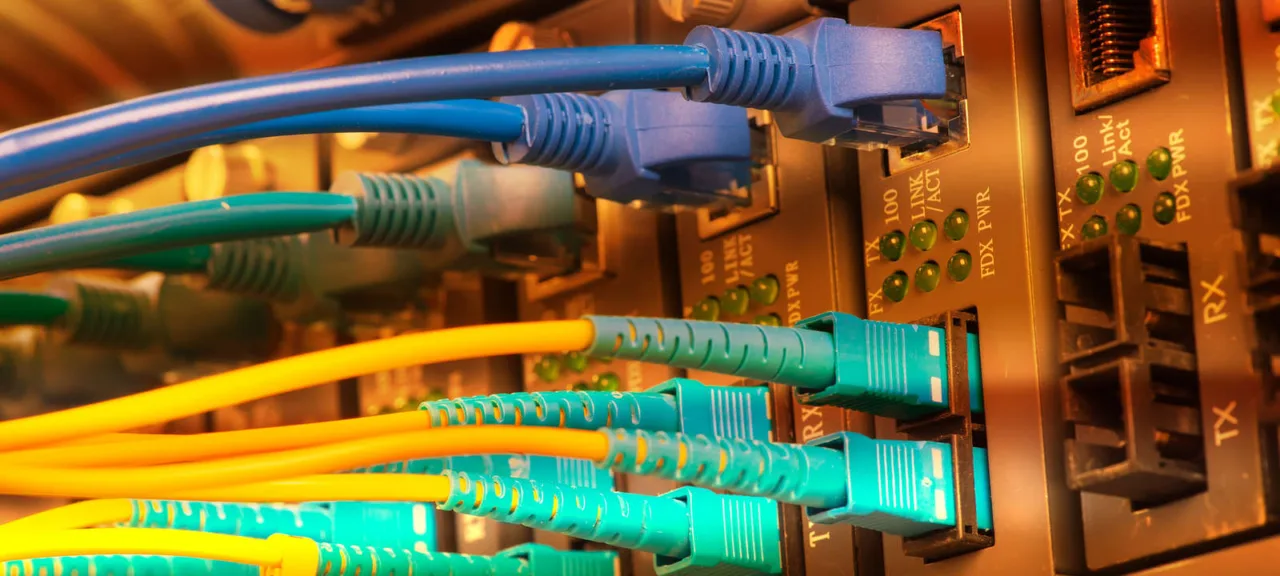CDP is a very useful yet potentially dangerous protocol. It lets you gather information about all neighboring devices. That can help a sysadmin find the right router, but it can also help an attacker map the target network. For that reason, CDP is usually disabled on outward-facing ports.
Use the show cdp neighbors command to view neighboring devices. The output will appear as a table.
Capability Codes: R - Router, T - Trans Bridge, B - Source Route Bridge
S - Switch, H - Host, I - IGMP, r - Repeater, P - Phone
Device ID Local Intrfce Holdtme Capability Platform Port ID
sw1 Fas 0/6 178 S I WS-C3560- Fas 0/9
sw1 Fas 0/1 171 S I WS-C2960- Fas 0/24

To get more detailed information about neighbors, add the detail parameter to the command:
show cdp neighbors detail
The output will be more verbose:
CDP neighbors information
Port : 1
Device ID : sw1
Address Type : IP
Address : 192.168.0.109
Platform : Cisco IOS Software, C3550 Software (C3550-IPSERVICESK9-M)
Capability : Switch
Device Port : FastEthernet0/9
Version : Cisco IOS Software, C3550 Software (C3550-IPSERVICESK9-M)
It shows the device’s IP address, the IOS version, and the ports on both ends, which is very handy when you need to trace a specific cable.
CDP operates at OSI Layer 2, and its mechanism works roughly as follows. A device sends a multicast advertisement to the MAC address 01-00-0c-cc-cc-cc. By default, advertisements are sent every 60 seconds on Ethernet, Frame Relay, and ATM interfaces. A device that understands these advertisements stores them in its CDP table. If a device misses three consecutive advertisements, it’s automatically removed from the table.
You can view the protocol settings with the command show . The output will look something like this:
Global CDP information:
Sending CDP packets every 60 seconds
Sending a holdtime value of 180 seconds
Sending CDPv2 advertisements is enabled
Source interface is Loopback0
To adjust settings (for example, the CDP advertisement interval), use the cdp command.
Because CDP is a Cisco protocol, in multivendor networks you should expect neighbor lists to be incomplete. For example, 3Com and D-Link switches don’t play nicely with CDP, while MikroTik tends to interoperate with Cisco quite well.
